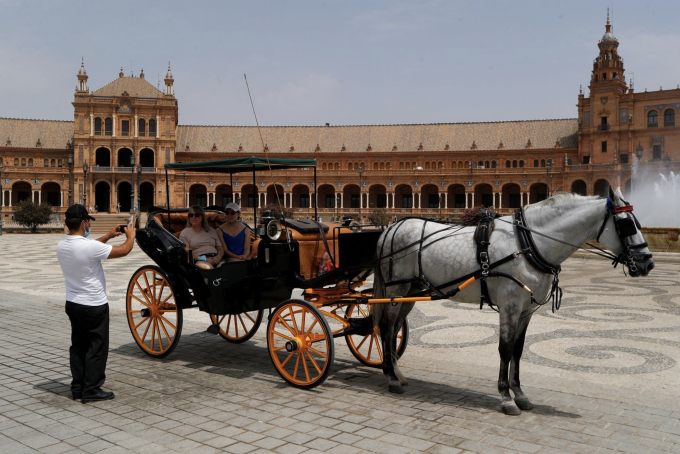
A coachman takes an image of vacationers as they sit on a horse-drawn carriage on the Plaza de Espana (Spain sq.), as a heatwave hits Spain, in Seville, southern Spain, Aug. 13, 2021. Photograph by Reuters
Vacationers visiting the southern Spanish metropolis of Seville might quickly need to pay a charge to discover the broad, ornate Plaza de Espana sq., the town corridor mentioned, as a part of plans to manage vacationer overload in a public open area.
“We’re planning to shut the Plaza de Espana and cost vacationers to finance its conservation and guarantee its security,” Mayor Jose Luis Sanz wrote in a put up on social media platform X, accompanied with a video exhibiting lacking tiles, broken facades and avenue distributors occupying alcoves and stairs.
Full with a semicircular Neo-Moorish palatial construction framed with tall towers on each ends and 4 bridges over a moat, the Plaza is a part of a posh constructed for the 1929 Ibero-American Exhibition that was designed to mirror Spanishness in its structure and tiled decorations.
1000’s of individuals from all around the world go to it each day, in horse-drawn carriages or on foot.
The construction served because the set of the 1999 movie ‘The Phantom Menace’ of the Star Wars franchise, and can also be a scorching spot of cultural life in Seville, internet hosting live shows, performs and vogue exhibits.
Though Sanz made clear that native residents would nonetheless be allowed free entry, many X customers, together with these from Seville, had been fast to criticize the plan.
“A tourism tax for ALL guests provokes much less debate and generates extra earnings. Hearken to the individuals, not the hoteliers,” wrote one person.
One other added: “What individuals need from you is a tourism tax and common regulation of mass tourism which is destroying our metropolis.”
With greater than three million vacationers a yr and a inhabitants of 700,000, Seville is the third most visited metropolis in Spain, which in flip is likely one of the world’s most visited international locations, with tourism representing 13% of GDP.
Many cities are struggling to seek out steadiness between much-needed tourism and sustaining their enchantment to residents. Italy’s lagoon metropolis of Venice will introduce a trial charge from April to restrict the variety of day trippers.



